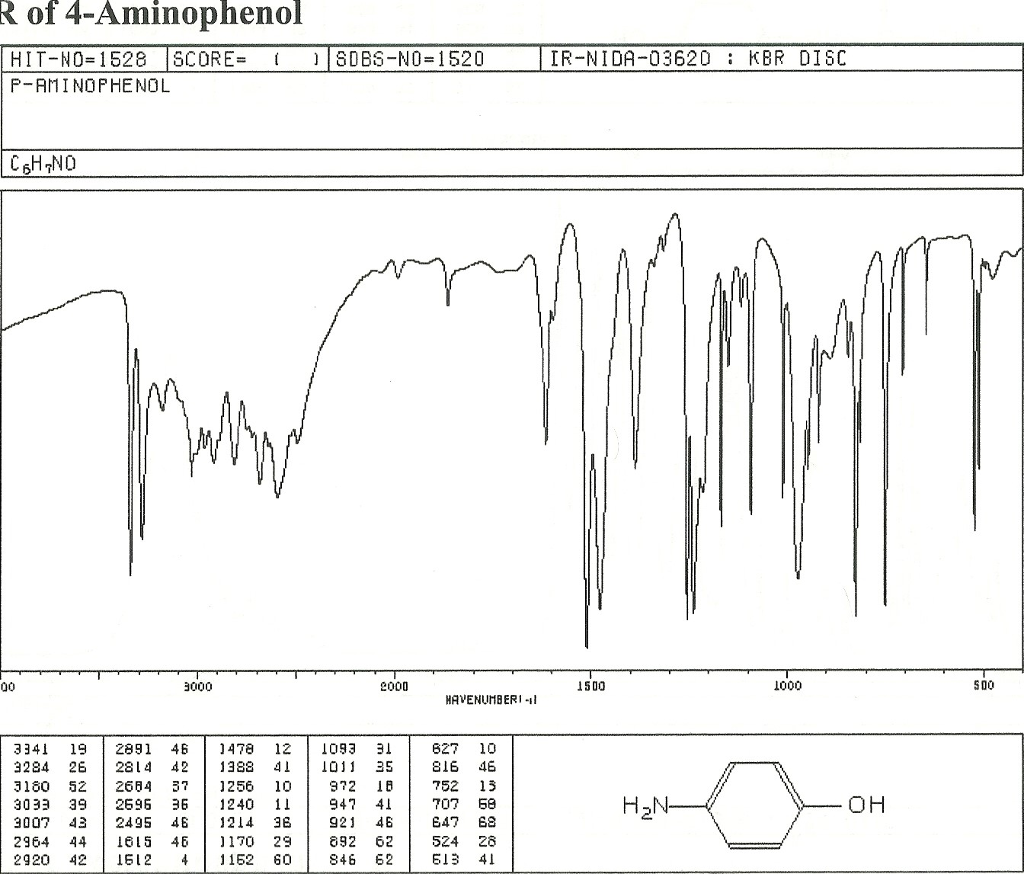
This interaction establishes ester carbonyl interaction to show two peaks at 17 cm -1, respectively. For this reason, the absorption peak at 1638 cm -1 is associated with the ring vibration ketone oxygen, which is hydrogen-bonded to the hydrated central Mg of another molecule of chlorophyll.Ī water molecule coordinated with a central Mg of one chlorophyll molecule can also be arranged to make a hydrogen bond with the ketone oxygen at C-10 of the carbonyl group of a separate chlorophyll molecule.
#Ir spectrum functional groups free#
Similarly, the absorption peak at 1695 cm -1 is considered a consequence of a small amount of free carbonyl in the absorbing species. The absorption peak at 1695 cm -1 reflects the free ketone carbonyl absorption and ester carbonyl absorption is found at 1735 cm -1 however, this is not differentiated from the 1650–1660 cm -1 aggregation peak. Short-wavelength shoulders indicate the presence of high aggregates in aliphatic hydrocarbons. The absorption peak characteristic of this aggregation is at ~1650 cm -1. This interaction ultimately results in dimer formation, usually used to characterize chlorophyll’s infrared spectroscopy in non-polar solvents. The absorption peak at 1653cm -1 in aliphatic hydrocarbons has been assigned to C-9 of ketone oxygen coordinated to Magnesium, i.e., C = O →Mg. The vibrational modes of plant pigment, especially chlorophyll is monitored using FTIR. Whereas, data values of any treatment on the basis of increase or decrease can predict and support the effect of functional groups. It describes changes in functional groups very clearly. The involvement of FTIR for observing changes in vibrational modes of functional groups is a unique and new technique. In this way, food quality is also improved through BC treatment. The surface adsorption of metals on the carbonized material decreases heavy metals’ mobility. Biochar contains specific structural sites for the immobilization of heavy metals. To avoid the inhibition of photosynthesis by metals from the environment, it is possible to augment growing plants with BC to immobilize heavy metals.


Any alteration to their structure can inhibit the whole photosynthesis process. Two basic chlorophylls (chlorophyll a and chlorophyll b) are involved in photosynthesis light reaction. These metals can critically affect photosynthesis by damaging the chlorophyll present within plant’s chloroplasts. These pollutants are taken up by plants and eventually negatively impact many metabolic processes like photosynthesis, respiration, transportation, and nitrogen metabolism. Unfortunately, the growth of many vegetables includes the use of highly polluted water that contains high levels of one or more heavy metals such as cadmium (Cd), lead (Pb), arsenic (As) and mercury (Hg). Many diseases in living organisms are either caused or exacerbated by environmental pollutants. These types of spectra are useful in detecting changes or visibility of functional groups, which are very helpful in supporting biochemical data such as an increase in protein can be detected by more visibility of C-N bands in FTIR spectra.Įnvironmental pollution is a serious hazard for all living things on earth. It is concluded that C-N bands are more visible in 5% BC treated spinach and fenugreek than in all other treatments. In fenugreek, additional effects are observed in the FTIR spectra of chlorophyll at the major groups of C = C, C = O and C9 of the ketonic groups, and the vibrational bands are more evident at C-H and N-H of the tetrapyrrole ring. In addition, the C = O bands with Mg and the C9 ketonic group of chlorophyll are observed as peaks at1600 (0%BC), 1650 (3%BC) and 1640, or near to1700 (5%BC) in spinach samples. The data obtained from the current study also shows that leaf chlorophyll can mask or suppress other molecules’ FITR bands, including proteins. The study’s primary goal was to investigate the silent features of infrared (IR) spectra of dried leave samples. For this, dried leaf of Spinacia oleracia (spinach) and Trigonella corniculata (fenugreek) were selected for FTIR spectral study of chlorophyll associated functional groups.

The FTIR of these bands is fundamental to the investigation of the effect of biochar (BC) treatment on structural changes in the chlorophyll molecules of both plants that were tested. Fourier transform infrared spectroscopy (FTIR) spectroscopy detects functional groups such as vibrational bands like N-H, O-H, C-H, C = O (ester, amine, ketone, aldehyde), C = C, C = N (vibrational modes of a tetrapyrrole ring) and simply C = N.


 0 kommentar(er)
0 kommentar(er)
